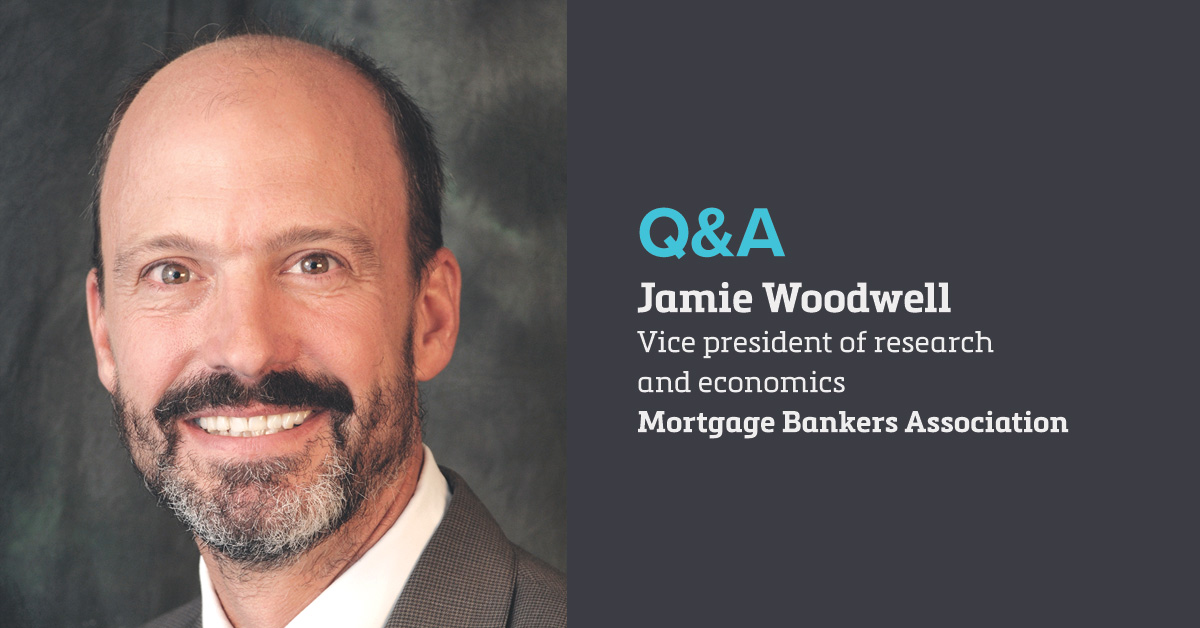Commercial real estate appears to be ready to sustain another down year, according to the Mortgage Bankers Association (MBA). After the market peaked in 2021 with a record level of commercial borrowing estimated to have reached $891 billion, the MBA reported that 2022 is expected to finish with borrowing totals of $804 billion. This year, the trade group forecasts total commercial and multifamily borrowing of $684 billion, down about 15% from last year.
The decrease in activity points to a sense of uncertainty as lenders wait to discern the market’s economic direction, said Jamie Woodwell, vice president of MBA’s research and economics group. Woodwell spoke with Scotsman Guide this past February about the unsettled state of commercial real estate and what can be expected for the remainder of 2023.
“Once we get some clarity in dealmaking, we will see the market sort of unstick itself and we should see transaction activity pick up.”
What do you expect for the rest of 2023?
We are expecting to see a decline in (property) values this year. It is building on a decline that we saw begin in the preliminary numbers for 2022. If you look back on 2022, the year started very strong. In the first half, mortgage originations, property sales and other sectors were up. But then as the year went on, the rise in interest rates, the uncertainty about cap rates and property values all took a toll. That lack of momentum is carrying into this year and is suppressing transaction activity and originations.
Do you see things picking up in the second half of 2023?
That’s one of the big questions. One of the things we’ve seen in the data and heard from people is that the rise in volatility in interest rates, and uncertainty about property valuations and other aspects of commercial real estate, have resulted in a lot of buyers and sellers sitting on their hands and waiting.
There is not a lot of transaction activity happening, which is making it tougher to resolve those questions about property values and other aspects of a transaction. Once we get some clarity in dealmaking, we will see the market sort of unstick itself and we should see transaction activity pick up. When we put our models together, they pointed to midyear when things should become unstuck.
What are you hearing from your members?
We did a survey of leaders of the top origination firms back in December, asking how they would describe the market. Not a single person taking part in the survey said the market was neutral or settled. Everyone said the market was very unsettled. When we asked them what they expected would happen this year, they expected the market to thaw. However, a majority of respondents said we won’t be back to a more settled market until the end of this year or beginning of next year.
When looking at the current lending market, what worries you?
When you look at the changes in interest rates and potential changes in property values, those loans that have been made more recently are the loans that are really going to face the most dramatic changes. Property loans made 10 years ago — or even two years ago — have benefited from strong appreciation. But new loans are dealing with a different landscape of changing property values and higher interest rates.
What factors would cause the commercial real estate market to start moving?
We are anticipating two main mechanisms that will force activity. One is when some of the adjustable-rate loans are resetting, and the other is when property owners need to refinance a maturing loan or sell properties. Those two mechanisms will bring some properties to market and start to prime the pump for giving participants a sense of where the market is at. I think that quarterly reports and each set of new data are going to be interesting and telling as to where the market is at. ●





